Skunk weed strain
$225.00 – $1,350.00
The Skunk weed strain is one of the most iconic and influential cannabis strains in history. Renowned for its pungent aroma, balanced effects, and robust genetics, Skunk has laid the foundation for countless hybrids and remains a favorite among cannabis enthusiasts worldwide.
The Ultimate Guide to the Skunk Weed Strain: History, Effects, and Cultivation Tips
The Skunk weed strain is a legendary name in the cannabis world, revered for its potent aroma, robust genetics, and enduring popularity. Whether you’re a cannabis enthusiast, a cultivator, or simply curious about this iconic strain, this guide will take you deep into the origins, characteristics, effects, and growing techniques of Skunk marijuana. By the end, you’ll understand why the Skunk strain remains a cornerstone of cannabis culture and how you can harness its potential yourself.
What Is the Skunk Weed Strain?
The Skunk weed strain, often referred to simply as “Skunk,” is a hybrid cannabis variety that has left an indelible mark on the global marijuana scene. Known for its pungent, skunky aroma—a scent that inspired its name—Skunk is a blend of sativa and indica genetics, offering a balanced high that appeals to a wide range of users. Its full name, Skunk #1, reflects its status as the original and most influential variant in a family of Skunk-related strains.
Skunk cannabis emerged in the late 1970s, bred by Sacred Seed Co. in California under the guidance of cultivator Sam the Skunkman. This strain was created by crossing diverse landrace genetics, including Afghani indica, Acapulco Gold sativa, and Colombian Gold sativa. The result was a hardy, high-yielding plant with a distinctive smell and a versatile effects profile, making it a favorite among growers and consumers alike.
Today, Skunk #1 and its derivatives are available through reputable seed banks like Sensi Seeds, Dutch Passion, and Nirvana Seeds, ensuring that its legacy continues to thrive. Whether you’re seeking the classic Skunk marijuana experience or exploring its modern offshoots, this strain offers something for everyone.
The History of Skunk Cannabis: A Legendary Beginning
The story of the Skunk weed strain begins in the counterculture of 1970s California, a time when cannabis breeders were experimenting with landrace strains from around the world. Sam the Skunkman and his team at Sacred Seed Co. set out to create a hybrid that combined the best traits of its parent strains: the sedative power of Afghani, the uplifting energy of Acapulco Gold, and the earthy potency of Colombian Gold.
After years of selective breeding, Skunk #1 was born—a strain that quickly gained fame for its reliability and vigor. By the 1980s, Skunk marijuana had crossed the Atlantic, finding a new home in the Netherlands, where Dutch breeders refined it further. It became a staple in Amsterdam’s coffee shops and won the inaugural High Times Cannabis Cup in 1988, cementing its status as a global icon.
The Skunk strain’s influence extends far beyond its own lineage. It’s considered a “parent strain” to countless hybrids, from Super Skunk to Lemon Skunk, shaping the modern cannabis landscape. Its genetics are so stable and adaptable that it remains a go-to choice for breeders looking to create new strains with consistent quality.
Characteristics of the Skunk Weed Strain
Appearance: Skunk cannabis plants are visually striking, with dense, resin-coated buds that showcase a mix of light green and earthy tones. Orange pistils weave through the flowers, and a thick layer of trichomes gives them a frosty sheen, hinting at their potency.
Aroma and Flavor: The defining feature of the Skunk weed strain is its aroma—an unmistakable blend of sour skunkiness, earthy undertones, and a hint of sweetness. When smoked or vaped, Skunk marijuana delivers a complex flavor profile, with notes of skunk, spice, and subtle citrus, leaving a lingering impression on the palate.
THC Content: Skunk #1 typically boasts a THC content ranging from 15% to 20%, though some phenotypes can reach as high as 25%. This moderate-to-high potency makes it suitable for both novice and experienced users, depending on dosage.
Genetics: As a hybrid, Skunk leans slightly toward indica (around 65% indica, 35% sativa), though its effects feel well-balanced. Its genetic makeup ensures resilience, fast flowering, and adaptability to various growing conditions.
Effects of Skunk Marijuana: What to Expect
The Skunk weed strain offers a versatile high that combines the best of indica and sativa effects. Users often report an initial wave of euphoria and mental clarity, courtesy of its sativa heritage. This uplifting sensation is ideal for socializing, creative pursuits, or simply enjoying a sunny day outdoors.
As the high progresses, the indica side kicks in, bringing a soothing body buzz that melts away tension and stress. This makes Skunk cannabis a popular choice for evening relaxation or unwinding after a long day. Common effects include:
- Euphoria: A mood boost that enhances happiness and positivity.
- Creativity: A spark of inspiration for artists, musicians, and thinkers.
- Relaxation: A calming effect that eases physical discomfort and mental fatigue.
- Focus: A subtle clarity that keeps you engaged without overwhelming stimulation.
However, higher doses of Skunk marijuana can lead to sedation, making it less ideal for tasks requiring sustained energy. Some users may also experience mild side effects like dry mouth or eyes, typical of most cannabis strains.
Skunk weed strain Potential Medical Benefits
Anecdotal evidence suggests that Skunk cannabis may help with conditions like chronic stress, anxiety, mild pain, and appetite loss. Its balanced effects make it a candidate for daytime or nighttime use, depending on the user’s needs. Always consult a healthcare professional before using cannabis for medical purposes.
Growing the Skunk Weed Strain: Tips for Success
One of the reasons the Skunk weed strain remains a favorite among cultivators is its ease of growth and resilience. Whether you’re a beginner or a seasoned grower, Skunk #1 offers a rewarding experience with the right approach. Here’s how to cultivate this iconic strain successfully.
Indoor vs. Outdoor Cultivation
Skunk cannabis thrives in both indoor and outdoor environments. Indoors, it benefits from controlled conditions, while outdoors, it flourishes in warm, sunny climates reminiscent of its landrace ancestors. Mediterranean-like weather—think California or Southern Europe—is ideal for outdoor grows.
Flowering Time
Skunk #1 has a relatively short flowering period of 7-9 weeks, making it a fast-finishing strain compared to many sativas. Outdoor growers can expect a harvest around late September to early October in the Northern Hemisphere.
Yield
This strain is known for its generous yields. Indoors, you can harvest 500-600 grams per square meter under optimal conditions. Outdoors, a single plant can produce up to 600 grams or more, depending on sunlight and care.
Growing Tips
- Lighting: Use high-quality LED or HPS lights indoors to maximize bud development.
- Nutrients: Provide a balanced nutrient mix, with extra nitrogen during the vegetative phase and phosphorus during flowering.
- Training: Employ techniques like low-stress training (LST) or the Screen of Green (ScrOG) method to boost yields and manage plant height (typically 80-120 cm indoors).
- Humidity and Temperature: Keep humidity at 40-50% during flowering and temperatures between 68-80°F (20-27°C) to prevent mold and stress.
- Pruning: Trim lower leaves to improve airflow and light penetration, enhancing bud quality.
Challenges
Skunk’s pungent aroma can be a double-edged sword it’s a delight to enthusiasts but may attract unwanted attention. Use carbon filters indoors and plant strategically outdoors to manage the smell. Its dense buds also require good ventilation to avoid mold.
Why Does Weed Smell Like a Skunk?
The skunky aroma of certain cannabis strains, including the famous Skunk weed strain, is one of the most recognizable traits in the marijuana world. But what causes this funky similarity to the spray of an actual skunk? The answer lies in chemistry, biology, and a bit of evolutionary coincidence.
The Role of Terpenes
Cannabis owes its diverse smells to organic compounds called terpenes, which are produced in the plant’s trichomes (the tiny, resinous glands on buds and leaves). Terpenes not only define a strain’s aroma but also contribute to its effects and therapeutic potential. In skunky weed, specific terpenes like myrcene, limonene, and caryophyllene play a starring role. Myrcene, in particular, is known for its earthy, musky scent, which can lean toward skunk-like notes when combined with other compounds.
Sulfur Compounds: The Skunk Connection
Recent research points to an even more direct link between weed and skunks: sulfur-containing compounds. In 2021, a study published in ACS Omega identified volatile sulfur compounds (VSCs) in cannabis, such as 3-methyl-2-butene-1-thiol, that closely resemble the chemicals in skunk spray. These VSCs are released when cannabis buds are handled or cured, intensifying that signature stench. Interestingly, these compounds are most prominent in potent, high-quality strains—explaining why skunky weed often packs a punch.
Evolutionary Mimicry?
Some speculate that cannabis may have evolved this skunky smell as a defense mechanism, mimicking the odor of a skunk to deter predators or pests. While this theory isn’t fully proven, it adds an intriguing layer to the question of why weed smells like a skunk. Regardless of the reason, this aroma has become a hallmark of strains like Skunk #1, turning a quirky trait into a badge of honor.
Is Skunk Weed Good or Bad?
The term “skunk weed” can spark debate. To some, it’s a sign of top-tier cannabis; to others, it’s a red flag. So, is skunk weed good or bad? The answer depends on context, quality, and personal preference. Let’s break it down.
The Good: Potency and Popularity
Skunk weed, especially the classic Skunk #1 strain, is celebrated for its robust genetics and balanced effects. With THC levels typically ranging from 15% to 20% (and sometimes higher in modern variants), it delivers a potent high that blends euphoria, creativity, and relaxation. This versatility makes it a favorite for recreational users and those seeking relief from stress, mild pain, or low mood.
The skunky aroma itself is often a marker of quality. Those sulfur compounds and terpenes don’t just stink—they signal a rich chemical profile that enhances flavor and effects. Strains like Super Skunk or Lemon Skunk build on this legacy, offering intense experiences that fans adore. For growers, skunk weed’s resilience and high yields (up to 600 grams per plant outdoors) make it a practical choice too.
The Bad: Misconceptions and Drawbacks
Not all skunk weed is created equal. In some circles, “skunk” has become a catch-all term for strong-smelling cannabis, including poorly grown or contaminated batches. Low-quality skunk weed might smell overpowering but lack potency, flavor, or smoothness, leaving users disappointed. Improper curing can also amplify the stench without improving the experience.
For some, the smell itself is a downside. It’s hard to be discreet with skunk weed—its odor can linger on clothes, in rooms, or across gardens, potentially drawing unwanted attention. Sensitive users might also find high-THC skunk strains overwhelming, leading to anxiety or lethargy if over consumed.
Skunk Weed Seeds: Growing Your Own Skunky Harvest
For those inspired to cultivate their own skunk weed, starting with skunk weed seeds is the way to go. Whether you’re eyeing the original Skunk #1 or a variant like Super Skunk, here’s everything you need to know about sourcing, growing, and enjoying these iconic seeds.
Where to Buy Skunk Weed Seeds
Quality starts with the source. Reputable seed banks offer authentic skunk weed seeds with verified genetics:
- Sensi Seeds: The gold standard for Skunk #1, with decades of expertise.
- Dutch Passion: Known for feminized and autoflowering Skunk options.
- Nirvana Seeds: Affordable yet reliable Skunk seeds for beginners.
- Seedsman: A wide selection of Skunk hybrids and classics.
Look for feminized seeds to ensure bud-producing plants or autoflowering varieties for faster harvests. Always check reviews and germination guarantees to avoid duds.
Growing Skunk Weed from Seeds
Skunk weed seeds are beginner-friendly, thanks to their hardy genetics and adaptability. Here’s a step-by-step guide:
- Germination: Soak seeds in water for 12-24 hours, then plant in moist soil or a damp paper towel until a taproot appears.
- Environment: Skunk thrives indoors with LED/HPS lights or outdoors in warm, sunny climates (68-80°F or 20-27°C).
- Flowering Time: Expect 7-9 weeks indoors; outdoor harvests hit around late September to early October.
- Yield: Indoors, aim for 500-600 grams per square meter; outdoors, up to 600 grams per plant.
- Odor Control: Use carbon filters indoors or plant strategically outdoors—the skunky smell kicks in during flowering.
Tips for Success
- Nutrients: Feed with nitrogen-rich formulas during vegetative growth, switching to phosphorus for flowering.
- Training: Use low-stress training (LST) to maximize light exposure and boost yields.
- Ventilation: Dense buds need good airflow to prevent mold, especially with Skunk’s thick trichome layer.
Popular Skunk Weed Seed Variants
- Skunk #1: The original hybrid (65% indica, 35% sativa) with classic skunk traits.
- Super Skunk: Higher THC and bigger yields, leaning more indica.
- Skunk Auto: Autoflowering for a quick 10-12 week seed-to-harvest cycle.
- Lemon Skunk: A zesty twist with uplifting effects.
Growing skunk weed seeds lets you tailor the experience—control potency, flavor, and freshness while dodging the risks of sketchy dispensary buds.
Popular Variants of the Skunk Weed Strain
The success of Skunk #1 has spawned numerous offshoots, each with its own twist on the classic formula. Here are a few standout variants:
- Super Skunk: A beefed-up version with higher THC (up to 25%) and a stronger indica lean, ideal for relaxation.
- Lemon Skunk: Infused with citrusy terpenes, this variant offers a zesty flavor and an energizing high.
- Skunk Kush: A cross with Hindu Kush, delivering intense body effects and a rich, earthy taste.
These strains retain the core qualities of Skunk cannabis while catering to specific preferences, from potency to flavor.
Why Skunk Marijuana Stands Out
In a market flooded with new strains, the Skunk weed strain endures for several reasons:
- Stability: Its genetics are standardized, ensuring consistent results for growers and users.
- Versatility: Balanced effects suit a variety of occasions and needs.
- Legacy: Its historical significance and influence on modern hybrids make it a cultural touchstone.
Whether you’re smoking it, growing it, or studying it, Skunk remains a benchmark of quality in the cannabis world.
How to Choose Skunk Cannabis Products
When shopping for Skunk marijuana, consider these factors:
- Source: Opt for reputable dispensaries or seed banks with verified genetics.
- Form: Available as flower, pre-rolls, concentrates, or seeds—pick what suits your consumption style.
- Potency: Check THC levels to match your tolerance and desired experience.
- Terpenes: Look for lab-tested products to confirm the skunky, earthy profile you expect.
Skunk Weed Strain in Pop Culture
The Skunk strain’s bold aroma and widespread use have earned it mentions in music, film, and literature. From stoner comedies to rap lyrics, “skunk weed” is shorthand for potent, unmistakable cannabis. Its reputation as a classic strain keeps it relevant across generations.
Final Thoughts on the Skunk Weed Strain
The Skunk weed strain is more than just a plant—it’s a phenomenon. From its groundbreaking origins to its lasting impact, Skunk #1 embodies the spirit of cannabis innovation. Whether you’re drawn to its skunky scent, its balanced effects, or its grower-friendly nature, this strain offers a timeless experience that’s hard to beat.
Ready to try Skunk cannabis for yourself? Explore it as a smoker, grower, or both, and discover why it’s been a fan favorite for over four decades. Share your experiences or questions in the comments below—we’d love to hear how Skunk has shaped your cannabis journey!
| Quantity | Ounce, QP, HP, LB |
|---|
Reviews
There are no reviews yet.
Related products
Marijuana Strains
Marijuana Strains
Marijuana Strains



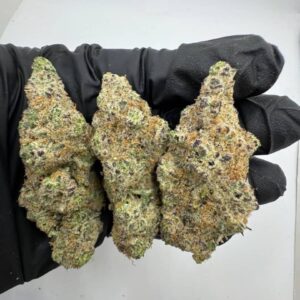




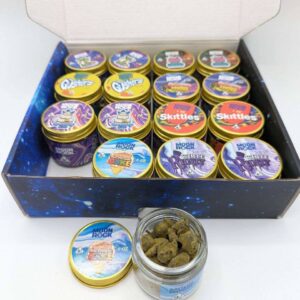

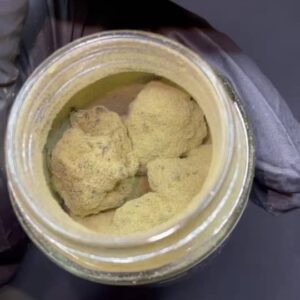

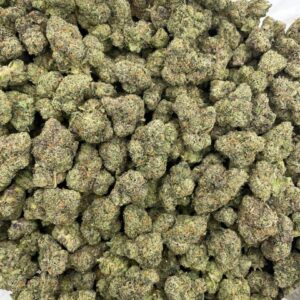
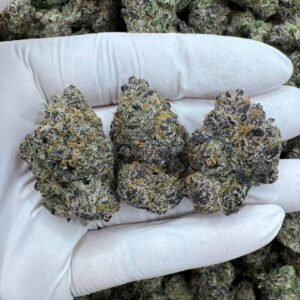
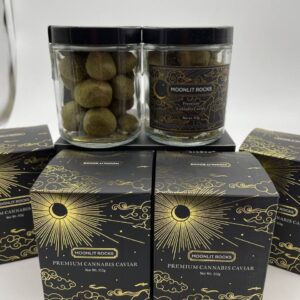
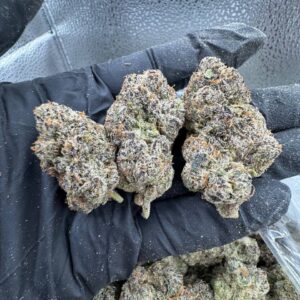
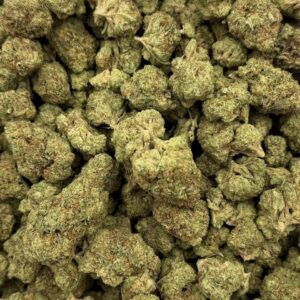
Be the first to review “Skunk weed strain”